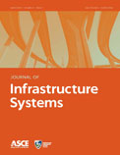
Journal of Infrastructure Systems
Scope & Guideline
Navigating the Complexities of Modern Infrastructure Systems
Introduction
Aims and Scopes
- Infrastructure Resilience and Risk Management:
Research on strategies and methodologies to enhance the resilience of infrastructure systems against natural disasters, climate change, and other stressors. - Innovative Technologies in Infrastructure:
Exploration of cutting-edge technologies such as machine learning, AI, and IoT in monitoring, managing, and optimizing infrastructure performance. - Public-Private Partnerships (PPP) and Economics:
Analysis of PPP models, economic implications, and performance assessments of infrastructure projects, focusing on value for money and sustainability. - Environmental and Social Impacts of Infrastructure:
Studies examining the environmental sustainability and social equity implications of infrastructure development and management. - Data-Driven Decision Making:
Utilization of data analytics, simulation models, and decision support systems for effective infrastructure management and policy-making.
Trending and Emerging
- Integration of AI and Machine Learning:
An emerging focus on using artificial intelligence and machine learning techniques to improve infrastructure monitoring, predictive maintenance, and performance optimization. - Climate Change Adaptation Strategies:
Increasing attention on developing adaptive infrastructure solutions that enhance resilience against climate change impacts, particularly in vulnerable regions. - Community Engagement and Social Equity:
Growing emphasis on the role of community engagement in infrastructure decision-making processes and the pursuit of equitable outcomes in infrastructure planning. - Digital Twin Technologies:
A rising trend in utilizing digital twin technologies for real-time monitoring and management of infrastructure systems, allowing for better predictive analytics and maintenance. - Interdisciplinary Approaches to Infrastructure Challenges:
A trend towards interdisciplinary research that combines engineering, economics, social sciences, and environmental studies to address complex infrastructure issues.
Declining or Waning
- Traditional Infrastructure Asset Management:
Older methodologies and frameworks for asset management are being overshadowed by more innovative, data-driven, and integrated approaches. - Conventional Construction Practices:
Research focused solely on traditional construction methods is decreasing as there is a growing emphasis on sustainability, smart technologies, and resilience. - Static Risk Assessments:
Static models for risk assessment are declining in favor of dynamic, probabilistic approaches that better account for uncertainties and evolving conditions. - Single-Factor Analysis in Infrastructure Studies:
Research that considers only one aspect of infrastructure systems is waning as interdisciplinary approaches that consider multiple factors become more prevalent.
Similar Journals
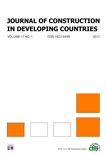
Journal of Construction in Developing Countries
Pioneering Research for Sustainable Urban GrowthThe Journal of Construction in Developing Countries, published by Penerbit Universiti Sains Malaysia, stands as a pivotal platform for disseminating vital research in the fields of construction, architecture, and civil engineering within the context of developing nations. With an ISSN of 1823-6499 and an E-ISSN of 1985-8329, this open-access journal has been dedicated to promoting the sharing of knowledge since 2006. Its significant contributions to the literature have earned it a respectable position in various categories as highlighted by its 2023 quartile rankings: Q2 in Architecture and Q3 in Building and Construction, Civil and Structural Engineering, as well as Strategy and Management. Researchers and professionals alike benefit from its expansive reach, as it engages with current challenges and innovations in the construction sector across developing regions. The journal's commitment to accessibility enhances its impact and encourages rigorous scholarly dialogue, making it an essential resource for those looking to navigate the complexities of urban development and infrastructure management.
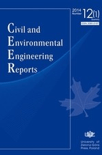
Civil and Environmental Engineering Reports
Advancing sustainable solutions in civil and environmental engineering.Civil and Environmental Engineering Reports is a prestigious open access journal published by UNIV ZIELONA GORA, dedicated to advancing research in the dynamic fields of civil and environmental engineering. With its ISSN 2080-5187 and E-ISSN 2450-8594, the journal aims to disseminate innovative studies, methodologies, and practical applications that address contemporary challenges in these disciplines. Since its establishment in 2014 as an open access platform, it has emerged as a vital resource for researchers, professionals, and students alike, enabling free access to high-quality research findings. Situated at Licealna 9, Zielona Góra 65-417, Poland, the journal strives to foster collaboration and knowledge exchange within the global engineering community, making it an essential reading for anyone invested in civil and environmental engineering advancements.
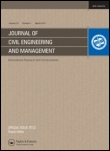
Journal of Civil Engineering and Management
Connecting academia and industry for strategic advancements.Journal of Civil Engineering and Management, published by Vilnius Gediminas Technical University in Lithuania, is a prominent open access journal dedicated to the dissemination of cutting-edge research in both civil and structural engineering as well as strategic management. With the ISSN 1392-3730 and E-ISSN 1822-3605, this journal has been an essential resource for academics and industry professionals since its inception in 2002 and has continued through to 2024. Recognized for its high-quality publications, it ranks in the Q2 quartile in both the fields of Civil and Structural Engineering and Strategy and Management, reflecting its significant impact in the academic community with a Scopus ranking of #75 out of 379 and #121 out of 478 respectively. The journal embraces an open-access model, promoting wider distribution and accessibility of knowledge to foster innovation and collaborative advancements in construction practices and management strategies. It serves as a vital platform for researchers, professionals, and students looking to contribute to and stay informed about the latest developments in these dynamic fields.

PROCEEDINGS OF THE INSTITUTION OF CIVIL ENGINEERS-CIVIL ENGINEERING
Driving Progress in Civil Engineering Through Scholarly Dialogue.PROCEEDINGS OF THE INSTITUTION OF CIVIL ENGINEERS-CIVIL ENGINEERING is a reputable journal dedicated to advancing the field of civil engineering. Published by Emerald Group Publishing Ltd, this journal serves as a vital platform for disseminating innovative research, practical applications, and theoretical advancements within civil and structural engineering. With an ISSN of 0965-089X and an E-ISSN of 1751-7672, it provides researchers, professionals, and students invaluable insights into the latest developments and challenges in the discipline. Although currently categorized in Q4 in Civil and Structural Engineering, the journal encompasses a rich history from 1992 to 2024, aiming to foster scholarly dialogue and collaboration within the engineering community. Its Scopus ranking reflects its commitment to quality, providing readers with a curated selection of impactful studies and findings that drive the profession forward.

Gradevinar
Unlocking Access to Cutting-Edge Engineering InsightsGradevinar, published by the Croatian Society of Civil Engineers-HSGI, is a leading Open Access journal in the field of Civil and Structural Engineering, with a significant history that dates back to its inception in 1980. This journal, with the ISSN 0350-2465 and E-ISSN 1333-9095, has established itself as a vital platform for disseminating innovative research and practical developments in civil engineering, particularly since it became Open Access in 2000, facilitating unrestricted access to its wealth of knowledge. As of 2023, Gradevinar is ranked in the third quartile (Q3) of Scopus’s Civil and Structural Engineering category, demonstrating its growing influence and relevance in the academic community, with a current ranking of #255 out of 379 journals in the field. Researchers, professionals, and students benefit from this journal's commitment to high-quality content that reflects the latest advancements and best practices in civil engineering, contributing to both technical proficiency and sustainable development in infrastructure projects across Croatia and beyond.

Journal of Civil Structural Health Monitoring
Exploring the future of infrastructure monitoring and safety.The Journal of Civil Structural Health Monitoring, published by SPRINGER HEIDELBERG, is a premier academic journal dedicated to advancing the field of civil and structural engineering, with a specific focus on the health monitoring of infrastructure systems. With an ISSN of 2190-5452 and an E-ISSN of 2190-5479, the journal has established itself as a leading source of rigorous research, evidenced by its impressive Q1 rankings in both Civil and Structural Engineering and Safety, Risk, Reliability, and Quality categories for 2023. As a widely respected platform, the journal offers researchers and practitioners access to high-impact studies, innovative technologies, and insights into the ongoing efforts to enhance infrastructure resilience. Despite its lack of an open-access model, the journal's content is accessible through institutional libraries, ensuring that a wide audience of engineers and scientists can benefit from the latest advancements. With its converged years from 2011 to 2024, the journal continues to play a vital role in shaping best practices and policy decisions in civil engineering, making it an invaluable resource for professionals, scholars, and students alike.

Civil Engineering Journal-Tehran
Pioneering Research in Civil Engineering and Construction Excellence.Civil Engineering Journal-Tehran is a premier academic publication focusing on the dynamic fields of civil engineering, construction, and environmental science. Published by C EJ PUBLISHING GROUP, this journal has garnered significant recognition, reflected in its impressive quartile rankings—ranking Q1 in Building and Construction and Civil and Structural Engineering, and Q2 in Environmental and Geotechnical Engineering. With its ISSN 2676-6957 and E-ISSN 2476-3055, this journal serves as a crucial platform for disseminating innovative research and advancements from 2019 through 2024. Notably situated at K N Toosi University of Technology in Tehran, Iran, it emphasizes both local and global perspectives on civil engineering challenges. Aiming to foster scholarly discourse, the journal is essential for researchers, students, and professionals dedicated to the evolution and sustainability of civil engineering practices.
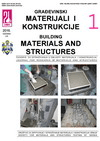
Gradevnski Materijiali I Konstrukcije-Building Materials and Structures
Advancing construction knowledge for a sustainable future.Gradevnski Materijiali I Konstrukcije - Building Materials and Structures is a premier open-access journal dedicated to advancing the field of construction materials and structural engineering. Published by SOC MATERIALS & STRUCTURES TESTING SERBIA, this journal provides a platform for researchers, professionals, and students to share their innovative findings and developments in building materials. With a commitment to open-access since 2012, it fosters unrestricted availability of research for a wider audience, encouraging collaboration and knowledge dissemination. The journal features a diverse range of topics, including material testing, structural integrity, and sustainable construction practices, making it a vital resource for those engaged in the design and analysis of structural components. By fostering the advancement of research and practice in this crucial sector, Gradevnski Materijiali I Konstrukcije plays an essential role in shaping the future of construction and material science.
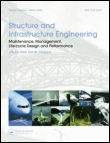
Structure and Infrastructure Engineering
Leading the Way in Engineering Knowledge and PracticeStructure and Infrastructure Engineering, published by TAYLOR & FRANCIS LTD, is a premier academic journal that serves as a vital resource in the fields of engineering and construction. Featuring an ISSN of 1573-2479 and an E-ISSN of 1744-8980, this journal has established its reputation as a leader in disseminating high-quality research. Since its inception, it has successfully transitioned through converged years from 2007 to 2024, earning a prestigious position within the Q1 quartile across multiple engineering disciplines, including Building and Construction, Civil and Structural Engineering, and Ocean Engineering, among others. Its impact is underscored by impressive Scopus rankings, particularly its 5th rank in Ocean Engineering within the top 95th percentile. The journal’s commitment to advancing knowledge in safety, risk, reliability, and quality makes it an indispensable platform for researchers, professionals, and students aiming to stay at the forefront of engineering innovations. Access to its comprehensive articles allows for a deeper understanding of contemporary challenges and solutions in infrastructure development.
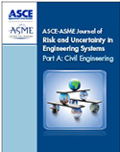
ASCE-ASME Journal of Risk and Uncertainty in Engineering Systems Part A-Civil Engineering
Elevating Standards in Risk Management and Engineering.ASCE-ASME Journal of Risk and Uncertainty in Engineering Systems Part A-Civil Engineering, published by the American Society of Civil Engineers (ASCE), is a leading journal dedicated to advancing the understanding and application of risk and uncertainty in civil engineering systems. With an ISSN of 2376-7642, this journal has been a pivotal platform for researchers and practitioners since its inception in 2015, converging its rigorous exploration through to 2024. It holds a commendable position in the academic community, securing a Q2 rating in categories such as Building and Construction, Civil and Structural Engineering, and Safety, Risk, Reliability and Quality as of 2023. The journal aims to disseminate innovative research that tackles the critical challenges posed by uncertainty in engineering systems, thus promoting safety, sustainability, and reliability in infrastructure. With impressive Scopus rankings, including a 76th percentile in Building and Construction, it continues to attract high-quality contributions from scholars worldwide. Emphasizing open dialogue, the journal does not currently adopt an open access model but remains committed to providing essential insights for the enhancement of civil engineering practices. Researchers, professionals, and students alike will find invaluable resources to enhance their knowledge and practice in this dynamic field.